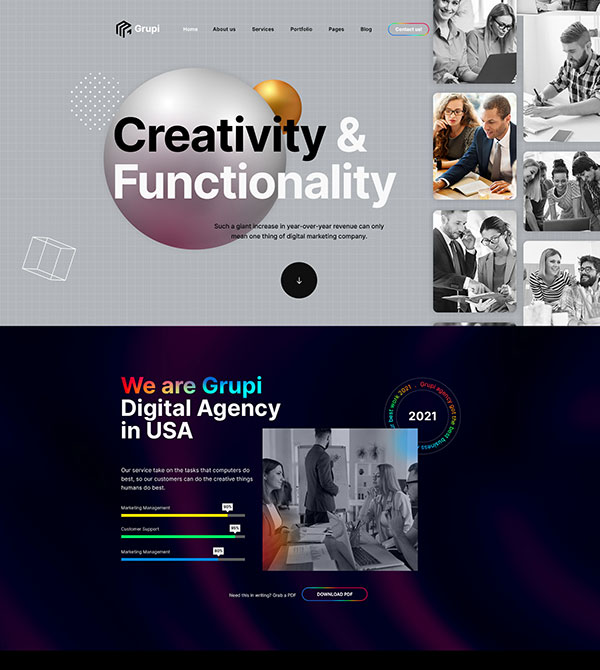1. Introduction to WebGL and Interactive Graphics in Gaming
In the evolving landscape of web-based gaming, WebGL (Web Graphics Library) has emerged as a transformative technology, enabling developers to create rich, interactive, and high-fidelity graphics directly within web browsers without the need for additional plugins. Its significance lies in democratizing access to immersive gaming experiences, making high-quality visuals available on a wide range of devices and platforms.
Historically, web graphics relied on basic 2D images and simple animations using technologies like HTML5 Canvas or Flash. The advent of WebGL revolutionized this paradigm by leveraging hardware acceleration, allowing for complex 3D rendering comparable to native applications. This shift has been crucial for modern games that demand real-time interactivity and visual fidelity, fostering deeper engagement and more dynamic gameplay environments.
Interactive and Real-Time Graphics in Modern Games
The importance of real-time graphics cannot be overstated. Players now expect seamless, responsive interactions—whether it’s navigating a detailed farm landscape or observing animated animals. WebGL’s capabilities facilitate this by processing complex visual data swiftly, ensuring that gameplay remains smooth and immersive, which is vital in genres like farming simulations where environment interaction is core.
2. Fundamental Principles of WebGL in Game Development
At its core, WebGL harnesses the power of the GPU (Graphics Processing Unit) to handle intensive visual computations. This acceleration enables rendering of complex scenes with multiple animated elements, such as farm animals or weather effects, without overburdening the CPU. Developers utilize shaders—small programs running on the GPU—to define how vertices and pixels are processed, creating realistic lighting, textures, and animations.
The rendering pipeline involves several key components:
| Core Concept | Description |
|---|---|
| Shaders | Programs that control rendering effects like lighting and textures |
| Buffers | Memory areas storing vertex and pixel data |
| Rendering Pipeline | Sequence of steps converting 3D models into 2D visuals |
Furthermore, WebGL’s cross-platform compatibility ensures that games function consistently across desktops, tablets, and smartphones, expanding accessibility for diverse audiences.
3. The Role of WebGL in Creating Immersive Farming Games
Farming games that leverage WebGL can deliver realistic environments—from lush fields to vibrant animals—enhanced by dynamic animations and weather effects. This realism is achieved through detailed 3D models, sophisticated lighting, and real-time environmental changes, creating an atmosphere that encourages players to explore and interact with their virtual farms.
User interaction is another crucial aspect. WebGL facilitates direct manipulation of 3D assets and terrain, allowing players to plant crops, tend animals, or manage resources intuitively. For example, dragging a virtual shovel or watering can becomes a seamless experience thanks to WebGL’s responsive rendering capabilities.
Popular farming games utilizing WebGL demonstrate these principles. They often feature lush landscapes, animated farm animals, and interactive tools—all rendered smoothly across devices, showcasing WebGL’s ability to bridge visual quality and accessibility.
4. Case Study: Chicken Road 2 as a Modern Illustration of WebGL’s Capabilities
Chicken Road 2 exemplifies how WebGL enables engaging and visually appealing farming games. Its gameplay involves guiding chickens through obstacle courses on farms, with a colorful, cartoonish visual style that appeals to all ages. The game’s visual fidelity relies heavily on WebGL’s ability to render animated characters, dynamic backgrounds, and weather effects in real-time.
WebGL enhances Chicken Road 2’s interactivity by providing smooth animations for farm animals and terrain, creating a lively farm atmosphere. For instance, animated farm animals such as chickens, cows, and pigs respond to player interactions, while weather effects like rain or sunshine change dynamically, enriching the player experience.
Examples of WebGL features in Chicken Road 2 include:
- Animated farm animals with responsive movements
- Real-time weather and lighting effects
- Interactive terrain that responds to user input
To explore such engaging farming experiences, you can visit Turquoise bumper? ouch., which showcases how WebGL brings farm environments to life with seamless interactivity.
5. Educational Insights: Connecting Historical and Cultural Contexts to Game Graphics
The evolution of visual storytelling in entertainment mirrors the advancements in WebGL graphics. Classic examples like Warner Bros’ Road Runner cartoons relied on simple, exaggerated animations to convey humor and action, much like early computer graphics. Similarly, Pink Floyd’s album Animals used symbolic imagery to communicate complex themes, paralleling how modern WebGL games embed cultural symbols in their visual design to deepen meaning.
Icons such as farm animals or traditional agricultural tools often appear in games to evoke cultural familiarity and reinforce educational themes. Integrating such symbols not only enhances visual appeal but also helps players connect with real-world agricultural practices and history, fostering engagement and learning.
For example, a game might depict a traditional barn or vintage tractor, subtly educating players about farming heritage while providing an immersive experience. These visual references serve as bridges between entertainment and education, enriching the player’s understanding of broader cultural narratives.
6. Technical Challenges and Innovations in WebGL-Based Farming Games
Despite its strengths, WebGL development faces several technical hurdles. Performance issues can arise on lower-end devices or older browsers, leading to lag or reduced visual quality. Developers address this by optimizing models, reducing polygon counts, and employing level-of-detail (LOD) techniques to maintain smooth gameplay.
Another challenge involves rendering large-scale environments with numerous animated elements. Techniques such as instanced rendering—drawing multiple objects with a single draw call—significantly improve efficiency. Additionally, progressive loading methods ensure that players experience minimal delays when entering expansive farm worlds.
Innovations inspired by WebGL include adaptive lighting systems, realistic physics simulations, and procedural generation of terrains and crops. These advancements contribute to more dynamic and personalized farm environments, elevating user engagement and educational value.
7. Future Trends: WebGL and the Next Generation of Interactive Farming Games
Looking ahead, WebGL’s integration with emerging technologies like Augmented Reality (AR) and Virtual Reality (VR) promises even more immersive farm experiences. Imagine tending your virtual crops in your living room or exploring a virtual farm in 3D space, blurring the line between digital and physical worlds.
Machine learning is also poised to revolutionize farm simulations by generating dynamic, adaptive environments that respond to player actions and learning objectives. This could include personalized tutorials or real-time crop growth adjustments based on simulated weather patterns.
Furthermore, WebGL enables the integration of educational content directly within games—such as demonstrations of sustainable farming practices or explanations of biological processes—making learning engaging and interactive.
8. Non-Obvious Perspectives: The Cultural and Educational Impact of WebGL-Powered Games
Beyond entertainment, interactive farming games serve as powerful tools for education. They can teach players about real-world agricultural facts—such as egg production cycles, crop rotation techniques, or farm management strategies—by simulating these processes visually.
“Visual storytelling through WebGL not only captivates players but also conveys complex themes like environmental sustainability and responsible farming, fostering a deeper understanding of global issues.”
This approach also enhances digital literacy. As players navigate these visually rich environments, they become more familiar with emerging technologies, preparing them for a future where digital and real-world knowledge increasingly intertwine.
9. Conclusion: The Synergy of WebGL, Interactive Gaming, and Cultural Contexts in Modern Education and Entertainment
WebGL stands at the intersection of technological innovation, cultural storytelling, and educational potential. Modern farming games like Chicken Road 2 exemplify how this technology can create engaging, realistic environments that serve both entertainment and learning purposes. As advancements continue, integrating AR, VR, and AI will further enrich these experiences, fostering a new era of interactive education.
By understanding the technical principles behind WebGL and appreciating its cultural significance, developers and educators can harness its power to build immersive, meaningful content that resonates across audiences. Whether exploring a virtual farm or studying sustainable practices, users benefit from the seamless blend of technology, storytelling, and education—an enduring synergy shaping the future of digital interaction.









